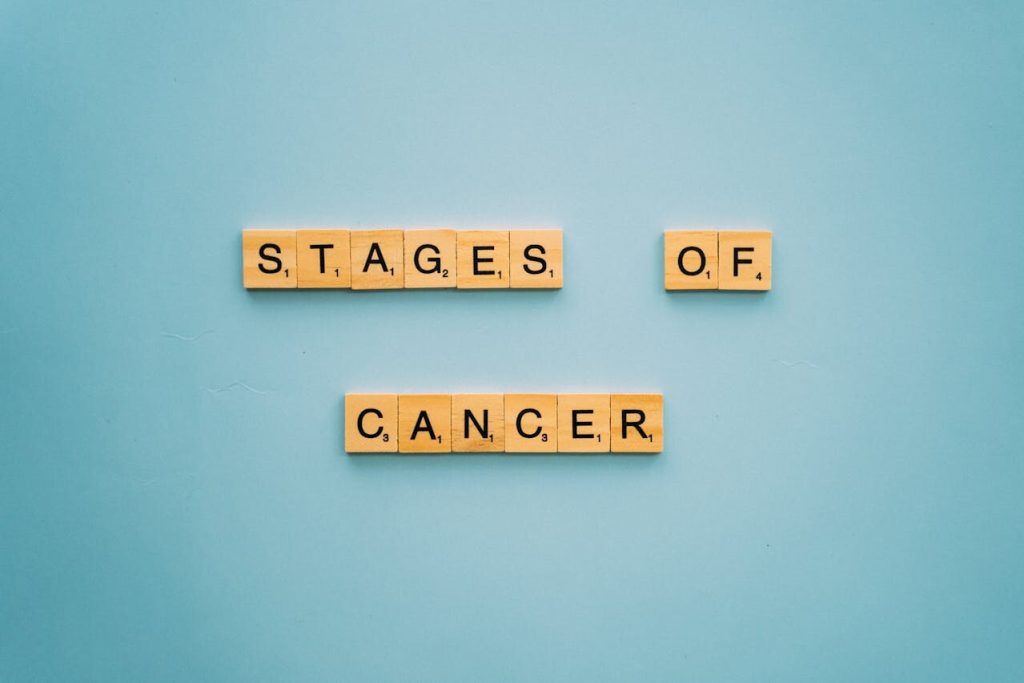Non Hodgkin Lymphoma (NHL) and Hodgkin Lymphoma (HL) are types of cancers that affect the lymphatic system. Although they share some similarities, there are significant differences between the two that affect their diagnosis, treatment, and prognosis. Understanding the differences between NHL and HL is critical in developing an effective treatment plan and improving the patient’s overall outcome.
NHL is the more common of the two and accounts for approximately 90% of all lymphoma cases. It develops when white blood cells called lymphocytes grow uncontrollably and form tumors in the lymph nodes and other lymphatic tissues. HL, on the other hand, is a rarer form of lymphoma that affects only about 10% of lymphoma patients. It originates in a single lymph node and then spreads to other lymph nodes and organs.
Key Takeaways
- Non Hodgkin Lymphoma and Hodgkin Lymphoma are two types of cancers that affect the lymphatic system.
- NHL is more common and originates in lymphocytes, while HL is rarer and originates in a single lymph node.
- Understanding the differences between NHL and HL is critical in developing an effective treatment plan and improving the patient’s overall outcome.
Understanding Non Hodgkin Lymphoma
Non Hodgkin Lymphoma (NHL) is a type of cancer that develops in the lymphatic system. Lymphocytes, a type of white blood cell, become abnormal and multiply uncontrollably, leading to the formation of tumors in the lymph nodes and other parts of the body.
There is no single cause of NHL, but certain risk factors can increase the chances of developing this cancer. These include age, weakened immune system, exposure to certain chemicals or radiation, and viral infections such as HIV and Epstein-Barr virus.
The symptoms of NHL can vary depending on the subtype and the location of the tumors. Common symptoms include swollen lymph nodes, fever, night sweats, fatigue, and unexplained weight loss.
There are several subtypes of NHL, classified based on the type of lymphocyte involved and their characteristics. These subtypes can have different treatment approaches and outcomes. Some of the common subtypes of NHL include diffuse large B-cell lymphoma, follicular lymphoma, and mantle cell lymphoma.
Diagnosis of Non Hodgkin Lymphoma
Diagnosing NHL typically involves a combination of physical examinations, imaging tests, biopsies, and laboratory tests. The doctor may examine the lymph nodes, spleen, and other organs for any signs of swelling or abnormalities. Imaging tests such as CT scans, MRIs, and PET scans can provide detailed information about the location and size of the tumors. Biopsies, which involve the removal of a small tissue sample, can confirm the presence of NHL and help identify the specific subtype. Laboratory tests such as blood tests can provide additional information about the health of the patient and the extent of the disease.
Precise diagnosis is crucial for determining the appropriate treatment approach for NHL. The treatment options for NHL depend on various factors such as the subtype, stage of the cancer, and the patient’s overall health. Treatment modalities for NHL include chemotherapy, radiation therapy, immunotherapy, targeted therapy, and stem cell transplantation.
Understanding Hodgkin Lymphoma
Hodgkin Lymphoma (HL) is a type of cancer that affects the lymphatic system, a network of vessels and tissues that plays a critical role in immune function. Unlike Non Hodgkin Lymphoma, Hodgkin Lymphoma is characterized by the presence of Reed-Sternberg cells, large abnormal cells that are not found in healthy lymph nodes.
HL may cause a range of symptoms, including swollen lymph nodes, fatigue, fever, night sweats, and weight loss. The severity and frequency of these symptoms depend on the stage and progression of the disease.
The causes of Hodgkin Lymphoma are not well understood, but several factors have been identified as potential risk factors, including a weakened immune system, exposure to certain infections such as Epstein-Barr virus, and a family history of lymphoma. HL is most commonly diagnosed in people between the ages of 20 and 40, as well as in those over 55.
The diagnosis of Hodgkin Lymphoma typically involves a physical examination, imaging tests such as a CT scan or PET scan, and a lymph node biopsy to examine the presence of Reed-Sternberg cells. The stage of the disease is determined based on the extent of lymph node involvement and whether the cancer has spread to other organs.
Treatment for Hodgkin Lymphoma varies depending on the stage and characteristics of the disease, but typically involves a combination of chemotherapy and radiation therapy. Targeted therapy and immunotherapy may also be used in certain cases.
Overall, Hodgkin Lymphoma is a serious but treatable form of cancer, with a relatively high survival rate. With prompt and appropriate treatment, many people with HL go on to live healthy and fulfilling lives.
Diagnosing Non Hodgkin Lymphoma
Accurate diagnosis of Non Hodgkin Lymphoma (NHL) is essential to determine the appropriate treatment approach. A combination of physical examination, imaging tests, biopsies, and laboratory tests is typically used to establish a diagnosis.
The physical examination involves an assessment of the lymph nodes, spleen, and liver for any signs of enlargement or tenderness. Imaging tests, such as CT scans, MRIs, and PET scans, are used to identify the location and extent of the cancerous cells.
Biopsies involve the removal of a small piece of tissue from the affected area, which is then examined under a microscope to determine the presence of cancerous cells. The type of biopsy used depends on the location of the cancer and the size of the lymph nodes.
Laboratory tests are also conducted to assist in the diagnosis of NHL. Blood tests, such as complete blood count (CBC), liver function tests, and lactate dehydrogenase (LDH) levels, can provide supplementary information about the disease.
Diagnosing Hodgkin Lymphoma
Diagnosis of Hodgkin Lymphoma (HL) involves various procedures and tests to confirm the presence of the disease. Physicians may start with physical examination and medical history discussion to identify any symptoms related to HL. The medical professional may then perform a biopsy to extract a sample of abnormal tissue and evaluate it under a microscope to identify the presence of Reed-Sternberg cells.
Imaging tests, such as X-rays, computed tomography (CT) scans, positron emission tomography (PET) scans, and magnetic resonance imaging (MRI), may also be used to illustrate the extent and severity of the disease. Blood tests, including complete blood count (CBC), chemistry tests, and erythrocyte sedimentation rate (ESR) tests, can also provide insights into the patient’s overall health and the status of the disease.
Once the diagnosis is confirmed, physicians may stage the cancer based on the extent of its spread to other parts of the body. Staging is essential in determining the most appropriate treatment option and predicting the outcome of the treatment. Stages of HL range from stage I, where the cancer is confined to a single lymph node or organ, to stage IV, where the cancer has spread throughout the body.
Treatment Options for Non Hodgkin Lymphoma
Non Hodgkin Lymphoma (NHL) is a treatable cancer, but the choice of treatment depends on the specific subtype and stage of the disease. Some common treatment options for NHL include:
| Treatment modality | Description |
|---|---|
| Chemotherapy | Uses drugs to kill cancer cells, administered orally or intravenously. Often used as a first-line treatment for NHL. |
| Radiation therapy | Uses high-energy radiation to destroy cancer cells. May be used alone or in combination with other treatments. |
| Immunotherapy | Uses the body’s immune system to fight cancer cells, often by administering monoclonal antibodies or CAR-T cell therapy. |
| Targeted therapy | Targets specific molecules or genes involved in cancer growth, such as B-cell receptors or the protein CD20. |
| Stem cell transplantation | Administers high doses of chemo and/or radiation to kill cancer cells, followed by the infusion of healthy stem cells to replace damaged bone marrow. |
Choosing the appropriate treatment for NHL is a complex process that involves weighing the pros and cons of each option and tailoring the treatment to the individual patient’s needs and preferences. Factors that may influence the decision include the patient’s age, overall health, subtype and stage of NHL, and previous treatments.
Combination therapy
Many patients with NHL receive a combination of treatments, such as chemotherapy and radiation therapy, to increase the chances of remission and improve overall survival rates. The sequence and dosage of these treatments may vary depending on the patient’s response and tolerance to therapy. Clinical trials are also available to test new combinations of treatments and assess their effectiveness.
“The choice of treatment for Non Hodgkin Lymphoma is a critical decision that requires careful consideration of the patient’s unique clinical circumstances and medical history.” – Dr. Leigh Erin Connealy, Founder of the Cancer Center for Healing
Treatment Options for Hodgkin Lymphoma
Hodgkin Lymphoma (HL) is a type of cancer that affects the lymphatic system, resulting in the abnormal growth of cells in the lymph nodes. The treatment approach for HL depends on several factors, including the stage of the disease, the subtype of HL, and the patient’s overall health.
Conventional treatment options for Hodgkin Lymphoma include chemotherapy, radiation therapy, and stem cell transplantation. Depending on the stage of the disease, chemotherapy may be administered alone or in combination with radiation therapy. The use of targeted therapy and immunotherapy is also emerging as a potential treatment option for certain subtypes of HL.
Chemotherapy is often the first-line treatment for Hodgkin Lymphoma. The drugs used in chemotherapy are designed to kill cancer cells and prevent them from multiplying. The specific chemotherapy regimen depends on the subtype and stage of HL. Chemotherapy can be administered orally or intravenously, depending on the drugs used and the patient’s health status.
Radiation therapy is another treatment option for Hodgkin Lymphoma. This involves the use of high-energy radiation to kill cancer cells. Radiation therapy may be used alone or in combination with chemotherapy. There are two types of radiation therapy: external beam radiation and internal radiation. The type of radiation therapy used depends on the location of the cancer cells.
Stem cell transplantation may be recommended for patients with Hodgkin Lymphoma that has not responded to other treatment options or has relapsed. This involves replacing the patient’s diseased bone marrow with healthy stem cells. The stem cells can be taken from the patient (autologous stem cell transplantation) or from a donor (allogeneic stem cell transplantation).
At the Cancer Center for Healing, patients with Hodgkin Lymphoma can receive a comprehensive treatment plan that encompasses conventional treatments with complementary therapies. The center’s holistic approach aims to address the physical, emotional, and spiritual aspects of healing. This approach enhances the patient’s overall well-being and optimizes treatment outcomes.
Complementary Therapies for Hodgkin Lymphoma
Complementary therapies provided at the Cancer Center for Healing include nutritional support, detoxification, immune modulation, mind-body therapies, acupuncture, and hyperbaric oxygen therapy. These modalities can help manage the side effects of conventional treatments, boost the immune system, and improve the patient’s quality of life.
Nutritional support focuses on creating a balanced and healthy diet that provides all the necessary nutrients for the body. Detoxification involves removing toxins from the body to help improve overall health and reduce the side effects of conventional treatments. Immune modulation aims to boost the patient’s immune system to improve the body’s ability to fight cancer cells.
Mind-body therapies, such as meditation, yoga, and massage therapy, help reduce stress and improve the patient’s mental health. Acupuncture helps manage pain and other symptoms commonly experienced by cancer patients. Hyperbaric oxygen therapy involves breathing pure oxygen in a pressurized chamber, which can help improve oxygen delivery to the body’s tissues.
The Cancer Center for Healing offers comprehensive cancer care that integrates conventional treatments with holistic modalities to provide a personalized and compassionate approach to cancer treatment. To schedule a consultation with the center, please call (949) 680-1880.
Holistic Approach to Cancer Care at the Cancer Center for Healing
The Cancer Center for Healing, located in Irvine, California, is a leading provider of comprehensive cancer care. The center offers a holistic approach to cancer treatment, addressing the physical, emotional, and spiritual aspects of healing. Their mission is to deliver patient-centered care that supports the whole person, not just the disease.
Under the guidance of Dr. Leigh Erin Connealy, MD, the Cancer Center for Healing combines conventional medical treatments with integrative and alternative therapies to provide a truly personalized and comprehensive approach to cancer care.
Comprehensive Cancer Care for Non Hodgkin Lymphoma at the Cancer Center for Healing
At the Cancer Center for Healing, patients with Non Hodgkin Lymphoma (NHL) receive a comprehensive and holistic approach to cancer care. Dr. Leigh Erin Connealy and her team of experienced practitioners offer a range of conventional and complementary therapies to support the patient’s physical, emotional, and spiritual well-being.
Conventional treatments for NHL may include chemotherapy, radiation therapy, targeted therapy, immunotherapy, and stem cell transplantation. However, at the Cancer Center for Healing, these treatments are combined with complementary modalities to optimize the patient’s overall health and treatment outcomes.
One such complementary modality is nutritional support, which provides patients with a customized diet plan tailored to their specific needs. This approach aims to improve the patient’s immune function and support the body’s natural healing processes.
Another important component of the center’s comprehensive care is detoxification. The team utilizes various detoxification methods to eliminate harmful toxins from the body, which may contribute to the development and progression of NHL.
Immune modulation is yet another aspect of the holistic approach taken at the Cancer Center for Healing. This involves enhancing the patient’s immune function using natural therapies, such as supplements and herbs, to help the body fight cancer cells more effectively.
Additionally, mind-body therapies, such as meditation, yoga, and counseling, are integrated into the patient’s treatment plan to address emotional and psychological needs, offering support for the challenges that arise during cancer treatment.
Comprehensive Cancer Care for Hodgkin Lymphoma at the Cancer Center for Healing
At the Cancer Center for Healing, patients with Hodgkin Lymphoma can expect a comprehensive and personalized approach to cancer care. Dr. Leigh Erin Connealy and her team of experts offer a range of integrative therapies that aim to optimize the patient’s physical, emotional, and spiritual well-being while enhancing treatment outcomes.
Conventional treatments for Hodgkin Lymphoma, such as chemotherapy and radiation therapy, are often utilized in conjunction with complementary therapies at the Cancer Center for Healing. This approach helps to mitigate the side effects of conventional treatments while promoting the body’s natural healing abilities.
In addition to conventional treatments, patients with Hodgkin Lymphoma may receive a range of holistic modalities at the Cancer Center for Healing, including nutritional support, immune modulation, detoxification, and mind-body therapies. These modalities are tailored to meet the individual needs of each patient and are aimed at enhancing the patient’s overall well-being and quality of life.
Schedule a Consultation at the Cancer Center for Healing
If you or a loved one has been diagnosed with Non Hodgkin Lymphoma or Hodgkin Lymphoma, consider scheduling a consultation with the Cancer Center for Healing. Their team of expert practitioners, led by Dr. Leigh Erin Connealy, specialize in comprehensive and integrative cancer care, with a focus on addressing the physical, emotional, and spiritual aspects of healing.
You can contact the center by phone at (949) 680-1880 to schedule your appointment and learn more about the personalized treatment options available. The Cancer Center for Healing is dedicated to providing compassionate care and empowering patients to take proactive steps in their cancer journey.
Conclusion
In conclusion, Non Hodgkin Lymphoma (NHL) and Hodgkin Lymphoma (HL) are two distinct types of lymphoma with unique characteristics. NHL originates from the lymphatic system, while HL develops in the lymph nodes. The presence of Reed-Sternberg cells is a hallmark feature of HL. Accurate diagnosis is crucial for effective treatment, which may involve chemotherapy, radiation therapy, immunotherapy, targeted therapy, and stem cell transplantation.
At the Cancer Center for Healing, patients have access to a comprehensive and holistic approach to cancer care that takes into account the physical, emotional, and spiritual aspects of healing. Dr. Leigh Erin Connealy and her team of experts offer a range of conventional and complementary therapies tailored to each patient’s needs. Whether it’s Non Hodgkin Lymphoma or Hodgkin Lymphoma, the Cancer Center for Healing provides personalized and compassionate care that empowers patients to take an active role in their cancer journey.
FAQ
Q: What are the key differences between Non Hodgkin Lymphoma and Hodgkin Lymphoma?
A: Non Hodgkin Lymphoma and Hodgkin Lymphoma differ in terms of symptoms, diagnosis, and treatment methods. Non Hodgkin Lymphoma is more common and has a wider range of subtypes, while Hodgkin Lymphoma is characterized by the presence of Reed-Sternberg cells.
Q: What are the main characteristics of Non Hodgkin Lymphoma?
A: Non Hodgkin Lymphoma can be caused by various factors and is associated with symptoms such as enlarged lymph nodes, fever, weight loss, and night sweats. There are different subtypes of Non Hodgkin Lymphoma, each with its own characteristics.
Q: How is Hodgkin Lymphoma different from Non Hodgkin Lymphoma?
A: Hodgkin Lymphoma is less common than Non Hodgkin Lymphoma and is characterized by the presence of Reed-Sternberg cells. It has distinct symptoms and diagnostic procedures compared to Non Hodgkin Lymphoma.
Q: How is Non Hodgkin Lymphoma diagnosed?
A: Diagnosing Non Hodgkin Lymphoma involves physical examinations, imaging tests, biopsies, and laboratory tests. Accurate diagnosis is crucial to determine the appropriate treatment approach.
Q: What are the diagnostic procedures for Hodgkin Lymphoma?
A: Hodgkin Lymphoma is diagnosed through lymph node biopsies, imaging tests, and the evaluation of Reed-Sternberg cells. Precise diagnosis is essential for effective treatment planning.
Q: What are the treatment options for Non Hodgkin Lymphoma?
A: Treatment for Non Hodgkin Lymphoma may include chemotherapy, radiation therapy, immunotherapy, targeted therapy, and stem cell transplantation. The specific treatment approach depends on the subtype and stage of the disease.
Q: What are the treatment options for Hodgkin Lymphoma?
A: Treatment for Hodgkin Lymphoma may involve chemotherapy, radiation therapy, immunotherapy, targeted therapy, and stem cell transplantation. The treatment regimen is determined based on the stage and characteristics of the disease.
Q: What is the holistic approach to cancer care at the Cancer Center for Healing?
A: The Cancer Center for Healing in Irvine, CA takes a comprehensive and holistic approach to cancer care, addressing the physical, emotional, and spiritual aspects of healing. Dr. Leigh Erin Connealy, an expert in integrative cancer care, leads the center.
Q: What comprehensive cancer care is provided for Non Hodgkin Lymphoma at the Cancer Center for Healing?
A: The Cancer Center for Healing offers a range of holistic modalities for the treatment of Non Hodgkin Lymphoma, including nutritional support, detoxification, immune modulation, and mind-body therapies, in addition to conventional treatments.
Q: What comprehensive cancer care is provided for Hodgkin Lymphoma at the Cancer Center for Healing?
A: The Cancer Center for Healing provides comprehensive treatment options for Hodgkin Lymphoma, integrating conventional treatments with complementary therapies to optimize overall well-being and enhance treatment outcomes.
Q: How can I schedule a consultation at the Cancer Center for Healing?
A: To schedule a consultation at the Cancer Center for Healing, please contact (949) 680-1880. The center offers personalized and compassionate care, and your consultation will provide an opportunity to explore the holistic treatment options available.






